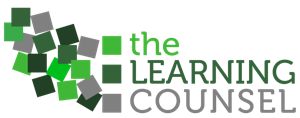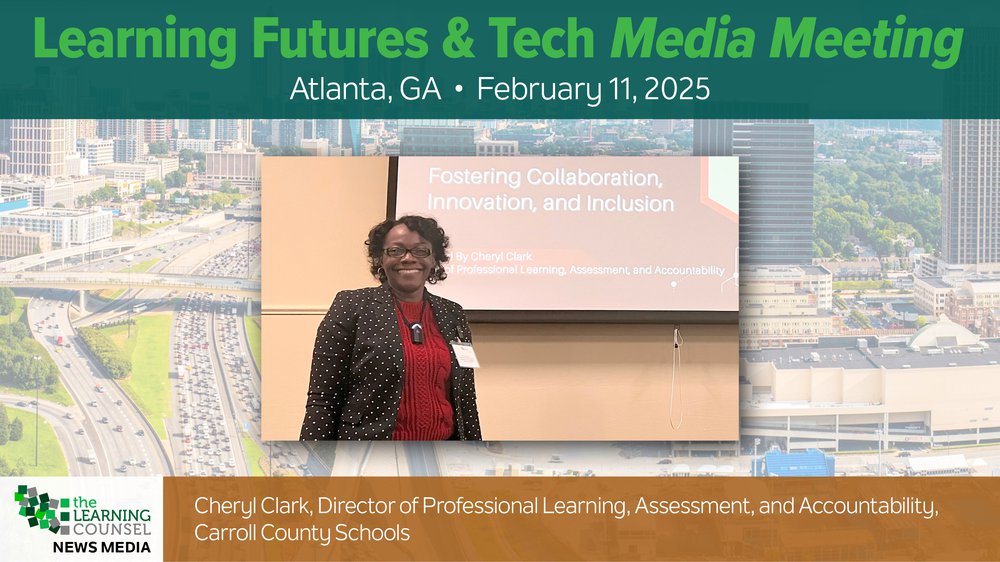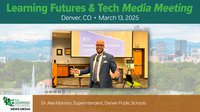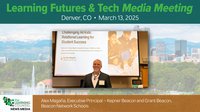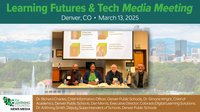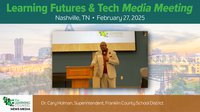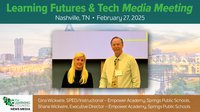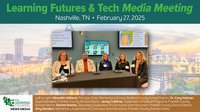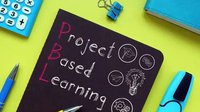At the Learning Futures & Tech Media Meeting in Atlanta, GA, Cheryl Clark, Director of Professional Learning, Assessment, and Accountability for Carroll County Schools, delivered an inspiring presentation on Building a STEM Ecosystem. She emphasized the importance of collaborative partnerships, inclusivity, and rethinking STEM education to ensure meaningful learning opportunities for all students.
One of the first steps Clark took in transforming STEM education in her district was conducting a needs assessment.
“I wanted to see where the district was, where the community was, and to understand the knowledge level of our teachers,” she explained. “We have five clusters in our district, and each is uniquely different. I needed to understand their specific strengths and resources before developing a strategy to enhance STEM learning.”
By taking this data-driven approach, Clark identified gaps in understanding and opportunities to strengthen STEM integration across different subjects, including English Language Arts (ELA).
One of the biggest challenges Clark encountered was redefining STEM for educators who didn’t see its relevance in their classrooms.
“What I found in my needs assessment is that some teachers believe that if they aren’t teaching science, technology, engineering, or math directly, they can’t use STEM,” she said. “I had to recalibrate their thinking about what STEM really is.”
To help educators embrace a broader view of STEM, Clark coined a new phrase:
"Students and Teachers Engaging in Mind Thinking."
This concept helped teachers see that STEM isn’t just about hands-on activities or robotics competitions—it’s about problem-solving, critical thinking, and innovation across all subjects.
“For my ELA teachers, I wanted them to understand that STEM is not just about activities. It’s not just something fun you put together—it requires deep thought and intentionality.”
Building a STEM ecosystem goes beyond the classroom—it requires strong community engagement and sustainable funding sources.
Clark stressed the importance of leveraging existing resources within the community to enhance STEM opportunities. “You have to look around and see what already exists. How can you build upon that and develop meaningful relationships with local businesses, organizations, and higher education institutions?”
She also tackled the financial aspect, which is often a significant barrier to implementing STEM initiatives. “Anytime you present a new program, the first question is always, ‘Where is the money coming from?’” Clark addressed this head-on by sharing insights into different funding streams and grant opportunities that schools can tap into to support STEM programs.
To drive home the significance of building a STEM ecosystem, Clark referenced poet Wallace Stevens:
"The snowman doesn’t know he is cold because he’s always cold."
She used this analogy to illustrate how educators often don’t realize the impact they are making while they are immersed in the work. But by stepping back and reflecting on their progress, they can see the growth, challenges, and successes that have shaped the journey.
Clark’s presentation was a powerful reminder that STEM education is for everyone—not just students in traditional science or math tracks. By fostering collaboration, embracing innovation, and ensuring inclusivity, schools can build a thriving STEM ecosystem that prepares students for success in an ever-evolving world.
“Once you start to peel away the layers and look back at the process,” she said, “then you can truly see the steps you've taken and the impact you're making.”
Tune in below for the full presentation.
